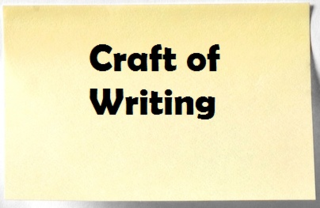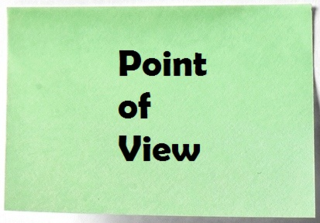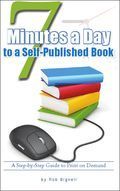Rob Bignell's Blog, page 351
December 4, 2013
Editing client publishes new short story collection
A long-time  editing client of mine, Oliver Frances, has released his latest book, “Heart II,” a collection of three literary stories. The tales include:
editing client of mine, Oliver Frances, has released his latest book, “Heart II,” a collection of three literary stories. The tales include:
g “Kiss Me” – A young lady and a man finally find what is most essential in life, though only in the final hours of their lives.
g “Young Boy” – A man’s freakishly youthful appearance allows him to relive his teen years and to finally mature, all thanks to a young girl’s confusion about his real age.
g “Tiny Dancer” – The broken dreams of a girl leads to love when she comes of age in the place that she dislikes the most.
The collection is available on Kindle.
Need an editor? Having your book, business document or academic paper proofread or edited before submitting it can prove invaluable. In an economic climate where you face heavy competition, your writing needs a second eye to give you the edge. I can provide that second eye.
Related articles
 Five Great Quotations about the Power of Writing
Five Great Quotations about the Power of Writing Start your story with solid narrative hook
Start your story with solid narrative hook Avoid shifting point of view in your story
Avoid shifting point of view in your story How long and frequent should author's blog be?
How long and frequent should author's blog be? Editing client publishes near-future novel
Editing client publishes near-future novel
December 3, 2013
Shun beautiful writing done for beauty’s sake
Ever read a beautiful image in a story but then ask yourself, “So what?”
a beautiful image in a story but then ask yourself, “So what?”
If so, you’ve probably been a victim of the “foreground to” trick. Coined by CSFW’s Sarah Smith, “foreground to” occurs when you draw attention to some object in your story purely for artistic effect.
A type of card tricks in the dark, it’s just another way of showing off. Consider this example:
He stood 5-foot-11 and had a vicious mustache.
Sure, it’s descriptive – and vicious mustache sounds cool with its use of alliteration and assonance – but it doesn’t move the story forward. First, 5-foot-11 is an average height, so there’s nothing remarkable about it and probably would only need of appear if the author wanted to show that the person was average; but vicious mustache instead suggests an atypical character. In giving the height, the author merely appears to want to demonstrate to the reader that he’s done his due diligence and thought about what the character looks like. Secondly, the purpose of vicious mustache appears to be simply to show that the author is capable of creating a poetic-sounding image. After all, exactly what is a vicious mustache?
To be effective, an image or description – like every other word in the story – should serve a purpose. For example, it might be used to develop a character by offering descriptions that manifest personality traits. Or it might be used to set atmosphere and mood. Or it might be used for thematic purposes, such as drawing parallels between two objects so as to show how a situation is analogous.
But to do it solely to demonstrate you’re capable of writing a pretty simile or description isn’t a great idea.
Need an editor? Having your book, business document or academic paper proofread or edited before submitting it can prove invaluable. In an economic climate where you face heavy competition, your writing needs a second eye to give you the edge. I can provide that second eye.
Related articles
 Improve your writing by dumping fuzzy words
Improve your writing by dumping fuzzy words Coax readers to eat your story's veggies
Coax readers to eat your story's veggies Get ideas from you head onto paper
Get ideas from you head onto paper Writers can blog about variety of topics
Writers can blog about variety of topics
December 2, 2013
Avoid shifting point of view in your story
Novice writers  often are tempted to shift the point of view in their stories. While a few published writers do so in their novels and short stories, this generally is uncommon, and you probably are best not to do so either.
often are tempted to shift the point of view in their stories. While a few published writers do so in their novels and short stories, this generally is uncommon, and you probably are best not to do so either.
Simply put, jumping between points of view is confusing to readers. A new point of view changes up the rhythm and flow of a story in an unnatural way. Readers often will have to re-read the passage to figure out what’s going on and then must acquaint themselves with a new narrator.
You’ll also probably write a less than satisfying plot. As your story’s suspense is built around the perspective from which the story is told, changing that point of view can undercut the tension by revealing information that the reader should not know. Resist thinking that an event in the story must be made plausible by explaining it in advance and then shifting the point of view to do just that. There are other ways to make an event plausible.
In addition, beginning writers sometimes break the point of view to reveal information about a character so that her motivations are better understood. They feel the point of view they've used doesn't satisfactorily present those motivations. In such cases, ask yourself if you would not be better to tell the whole story from the point of view you switched to for just one scene.
Changing the point of view to resolve plot problems often causes the reader to feel cheated. After all, if you break the third-person point of view by telling one scene in first person, why not tell another scene from another character's first-person perspective?
If you do switch point of views – and there are a few instances where you might want to (such as a schizophrenic character), you'll need to separate the relived scene typographically, perhaps by placing it in italics and possibly by setting it off with line breaks from the rest of the text. If a lengthy scene, it might be its own chapter with the place/time indicated in bold beneath the chapter's heading.
Need an editor? Having your book, business document or academic paper proofread or edited before submitting it can prove invaluable. In an economic climate where you face heavy competition, your writing needs a second eye to give you the edge. I can provide that second eye.
Related articles
 How do you know when your book is done?
How do you know when your book is done? Start your story with solid narrative hook
Start your story with solid narrative hook Limit number of key characters in story
Limit number of key characters in story
December 1, 2013
Five Great Quotations about the Power of Writing
“There are  two kinds of writer: those that make you think, and those that make you wonder.” – Brian Aldiss
two kinds of writer: those that make you think, and those that make you wonder.” – Brian Aldiss
“A writer is someone who can make a riddle out of an answer.” – Karl Kraus
“To achieve lasting literature, fictional or factual, a writer needs perceptive vision, absorptive capacity, and creative strength.” – Lawrence Clark Powell
“Words are the most powerful drug used by mankind.” – Rudyard Kipling
“It is the writer who might catch the imagination of young people, and plant a seed that will flower and come to fruition.” – Isaac Asimov
Need an editor? Having your book, business document or academic paper proofread or edited before submitting it can prove invaluable. In an economic climate where you face heavy competition, your writing needs a second eye to give you the edge. I can provide that second eye.
Related articles
 Five quotations about writing as self-discovery
Five quotations about writing as self-discovery Five great quotations about writing
Five great quotations about writing Five quotations about the business of writing
Five quotations about the business of writing Place commas inside quotation marks
Place commas inside quotation marks
November 30, 2013
Editor’s name appears in two new books
In addition  to writing books, I’m now featured in them! Wisconsin novelist Ann M. Andrashe’s new book “What Say You?” is a collection of quotations from other writers, and includes a quote from yours truly. Last year, Andrashie published the book, “Dog Island,” which is largely set in the Bayfield area. I’m also “mentioned” in Thonas Rand’s zombie apocalypse novel “The Fall of Society”, appearing on the roster of mentally ill patients in an asylum; among the other inmates are Sarah Connor. It’s a little in-joke (Though I’m certain a few exes might think it highly appropriate.), as I was editor for Rand’s book.
to writing books, I’m now featured in them! Wisconsin novelist Ann M. Andrashe’s new book “What Say You?” is a collection of quotations from other writers, and includes a quote from yours truly. Last year, Andrashie published the book, “Dog Island,” which is largely set in the Bayfield area. I’m also “mentioned” in Thonas Rand’s zombie apocalypse novel “The Fall of Society”, appearing on the roster of mentally ill patients in an asylum; among the other inmates are Sarah Connor. It’s a little in-joke (Though I’m certain a few exes might think it highly appropriate.), as I was editor for Rand’s book.
Need an editor? Having your book, business document or academic paper proofread or edited before submitting it can prove invaluable. In an economic climate where you face heavy competition, your writing needs a second eye to give you the edge. I can provide that second eye.
Related articles
 Editor interviewed at 'Welcome to the Toi Box'
Editor interviewed at 'Welcome to the Toi Box' Editor guest blogger at Eat, Sleep, Write
Editor guest blogger at Eat, Sleep, Write Oxford library hosts editor, cousin novelist
Oxford library hosts editor, cousin novelist Editing client publishes near-future novel
Editing client publishes near-future novel What is a writer's 'natural' temperament?
What is a writer's 'natural' temperament?
November 29, 2013
How to drive traffic to your website
While creating  a website is an excellent idea, it won’t help you much if you no one sees it. That means you’ll need to promote it, which we’ll cover in upcoming entries. But even when not promoting your website, there are ways to drive visitors (aka as “traffic”) to your website.
a website is an excellent idea, it won’t help you much if you no one sees it. That means you’ll need to promote it, which we’ll cover in upcoming entries. But even when not promoting your website, there are ways to drive visitors (aka as “traffic”) to your website.
To get visitors to your website, you want it to have a high “page rank.” When anyone enters words into a search engine, a list of potential websites that might meet their needs pops up. If your website is among the first 10 listed, you’ve got an incredibly high page rank. If your site doesn’t show up until the 20th page of listings, you’ve got a really low page rank. You objective is to ensure your website gets closer to the first 10 listed than to the 200th entry. Doing so greatly increases the odds that someone conducting an Internet search will then go to your website (as opposed to someone else’s site, as they also may be selling a book with the same topic or in the same genre as you).
One of the quickest ways to improve in page rankings is to get links to your website. There are a variety of ways to do that, but they’ll require a concerted effort on your part. You should be able to links to your site through:
g Other bloggers – Offer to swap links with other bloggers. If you wrote a book about beer, a link to your blog would be great on a beer lover’s blog (and vice versa!).
g Press release distribution sites – Send a press release to distribution sites that will post it (and probably a link to your website) online. You press release probably won’t result in media attention simply because it’s been posted, but you’re really only interested in the link.
g Social review sites – These websites post visitor-written reviews of businesses, products and public facilities. There are a number of book-related social review sites where you can set up a page about your tome and yourself.
g Directory sites – Some sites list links to various businesses. If you do consulting related to your book, get your name with a link to your website posted on them.
g Event listings – Should you have a book signing/reading or other appearance, post it on various event listings for the community where your appearance is planned. Include a link to your website.
g Answer board sites – You’re an expert on the topic you wrote about (or if a novelist, you’re now an expert on writing), so share your expertise and experiences on answer boards related to your subject area. As part of your signature, include a link to your website.
g Video listings – The biggest driver to most websites are videos posted on YouTube. Create some videos in which you tell about your book or discuss the subject that you just wrote about. Clicking on the video sends people to your website where there’s a video feed.
In addition to creating links all over the web, submit your site to as many search engines as you can. This will ensure that the various search engines out there actually know about and list your website. For the larger search engine houses, such as Google, you probably won’t have to do anything as your site automatically will be listed within days of going live.
Another way of driving traffic to your website is through Search Engine Optimization, which we’ll discuss in an upcoming entry.
Need an editor? Having your book, business document or academic paper proofread or edited before submitting it can prove invaluable. In an economic climate where you face heavy competition, your writing needs a second eye to give you the edge. I can provide that second eye.
Related articles
 How to construct your website's home page
How to construct your website's home page How to promote multiple books on your website
How to promote multiple books on your website How to find a literary agent for your book
How to find a literary agent for your book
November 28, 2013
Download editor’s self-publishing book free
You can  download my 7 Minutes a Day to a Self-Published Book for FREE from Friday, Nov. 29 through Sunday, Dec. 1, on your Amazon Kindle. Whether writing a novel or nonfiction, whether planning to print a paperback or an ebook, this book guides you through the self-publishing process, from the title page to the index, from designing a cover to formatting your text. The title is the second in a four-book series about writing; the other three address writing a fiction bestseller, promoting your book, and mastering the craft of fiction writing.
download my 7 Minutes a Day to a Self-Published Book for FREE from Friday, Nov. 29 through Sunday, Dec. 1, on your Amazon Kindle. Whether writing a novel or nonfiction, whether planning to print a paperback or an ebook, this book guides you through the self-publishing process, from the title page to the index, from designing a cover to formatting your text. The title is the second in a four-book series about writing; the other three address writing a fiction bestseller, promoting your book, and mastering the craft of fiction writing.
Need an editor? Having your book, business document or academic paper proofread or edited before submitting it can prove invaluable. In an economic climate where you face heavy competition, your writing needs a second eye to give you the edge. I can provide that second eye.
How to format line spacing for an ebook
One of the  common problems indie authors run into when formatting their ebook text is line spacing. This is the amount of space between lines and paragraphs.
common problems indie authors run into when formatting their ebook text is line spacing. This is the amount of space between lines and paragraphs.
Fortunately, adjusting the spacing between lines is easy enough in a word processing program; simply go to the line and paragraph spacing menu and adjust. Usually 1 or 1.15 is good enough; any more, and the lines will be difficult to read.
A bit more confusing to resolve is the spacing between paragraphs. Many writers like to automate the paragraph spacing so that an empty line automatically appears once the Enter key is hit. While this saves on key strokes up front, it becomes problematic later when formatting. In truth, the “add space after paragraph” function actually creates more keystrokes. It’s best to single space the text and if formatting a paper version first, use the tab key to create an indent.
Of course, this in turn creates issues when you want to convert the paperback into an ebook. Most ebooks don’t use indents but instead place a blank line between the paragraphs. This is the standard style used at Smashwords.
Converting your paperback to ebook is simple enough, though, and can be done in just a few keystrokes. To begin, you’ll need to eliminate the tabs. In Microsoft Word, you can do that by:
g Clicking on the arrow in the lower right corner of the Paragraph portion of the Command Ribbon at the top the screen.
g A pop-up window will appear; in the lower left-hand corner, hit the Tabs button.
g A new pop-up window will appear; in the lower right-hand corner, hit the Clear All button than the OK button.
All the indents used to mark the beginning of a paragraph will have disappeared.
Adding the extra line between paragraphs also is easy. In Microsoft Word, look at the Editing menu in the Command Ribbon, then:
g Click Replace.
g A pop-up window will appear. In the Find What box, type ^p (which represents a paragraph mark). You can find that by clicking the More>> button in the lower left corner then clicking on the Special button; on the drop-down menu that appears, hit “paragraph mark”.
g Do the same for the Replace With box, however place two paragraph marks in it so that you have ^p^p.
g Click “Replace All”
You now have an extra space between each paragraph, and the text of your paperback is formatted for an ebook.
There are a couple of items to keep in mind when making these conversions. First, don’t use a capital letter for your paragraph mark; ^P doesn’t work. Secondly, you still need to make a visual run-through of your text. Sometimes a new paragraph wasn’t started by hitting the Enter key, and in such cases paragraphs don’t enjoy a line space between them.
If formatting an ebook first rather than converting a paperback, follow these basic rules:
g Use single space with the “Add Space After Paragraph” and “Add Space Before Paragraph” (or their equivalents in word processing programs) turned off.
g Don’t use tabs or extra spacing to indent the beginning of a paragraph.
g Hit Enter twice at the end of each paragraph.
Need an editor? Having your book, business document or academic paper proofread or edited before submitting it can prove invaluable. In an economic climate where you face heavy competition, your writing needs a second eye to give you the edge. I can provide that second eye.
November 27, 2013
Which to choose? Pickup vs. pick-up vs. pick up
How the word is spelled depends on which part of speech it is (See, you should have paid attention in junior high English class after all!).
word is spelled depends on which part of speech it is (See, you should have paid attention in junior high English class after all!).
“Pickup” is used when you have a noun or are referring to a thing, as in “Jacob drive his pickup to the prom” or “Sophia found that drinking a can of soda gave her a real pickup.”
“Pick-up” is an adjective that describes something, as in “Mason’s pick-up line surprisingly worked.” In this case, “pick-up” describes what kind of line it is.
“Pick up” is a verb, which shows that someone is “doing something,” as in “Pick up some milk on your way home tonight!”
Need an editor? Having your book, business document or academic paper proofread or edited before submitting it can prove invaluable. In an economic climate where you face heavy competition, your writing needs a second eye to give you the edge. I can provide that second eye.
Related articles
 Breaking the barrier: Hurdle vs. hurtle
Breaking the barrier: Hurdle vs. hurtle All in order: Follow up vs. follow-up vs. followup
All in order: Follow up vs. follow-up vs. followup
November 26, 2013
Work off the fat from overwritten descriptions
Fabio’s robust,  bulging arms swathed themselves in a bronze casing about Shannon’s flawless, wilting body. Her velvety, wine-colored lips arched toward his as her sparkling sapphire eyes gazed into his brilliant, glowing emerald pupils and she in turn sheathed his body with her elongated, graceful, snow white arms. They were one at last.
bulging arms swathed themselves in a bronze casing about Shannon’s flawless, wilting body. Her velvety, wine-colored lips arched toward his as her sparkling sapphire eyes gazed into his brilliant, glowing emerald pupils and she in turn sheathed his body with her elongated, graceful, snow white arms. They were one at last.
Wasn’t that pretty?
Maybe, if you like pigs with lipstick. It’s a good example of fat writing.
Fat writing, a term coined by CSFW’s Sarah Smith, is “unnecessary and grandiose verbiage.” You may have heard writing instructors refer to it as “verdant greenery” or “purple prose.”
You want to trim the fat off your writing. If you stuff it with grandiosities, you’re just showing off, or demonstrating your writing skills not to advance the story but merely to prove you’ve got a way with words. Okay, so maybe you’re good at creating a clever image with consonance and alliteration, but what is the point of that image if it doesn’t advance the story? It’s just fat on your piece…and while your story can be lean, muscled or curvy, you don’t want flab hanging from it.
Fixing it is easy: Simplify your sentences and say exactly what you mean. For example, the first paragraph could be rewritten as: Fabio and Shannon embraced and gazed into one another’s eyes. They were one at last. Notice how all of the extra adverbs and adjective were deleted.
Giving your writing a good liposuction doesn’t mean it can’t be evocative or sensual. Quite the contrary. It will be more so after you’ve toned and shaped your sentences.
Need an editor? Having your book, business document or academic paper proofread or edited before submitting it can prove invaluable. In an economic climate where you face heavy competition, your writing needs a second eye to give you the edge. I can provide that second eye.
Related articles
 Coax readers to eat your story's veggies
Coax readers to eat your story's veggies Improve your writing by dumping fuzzy words
Improve your writing by dumping fuzzy words Forewords, prefaces and introductions
Forewords, prefaces and introductions Follow Heinlein's Rules to land big book deal
Follow Heinlein's Rules to land big book deal Get out front of this pair: Forward vs. foreword
Get out front of this pair: Forward vs. foreword



